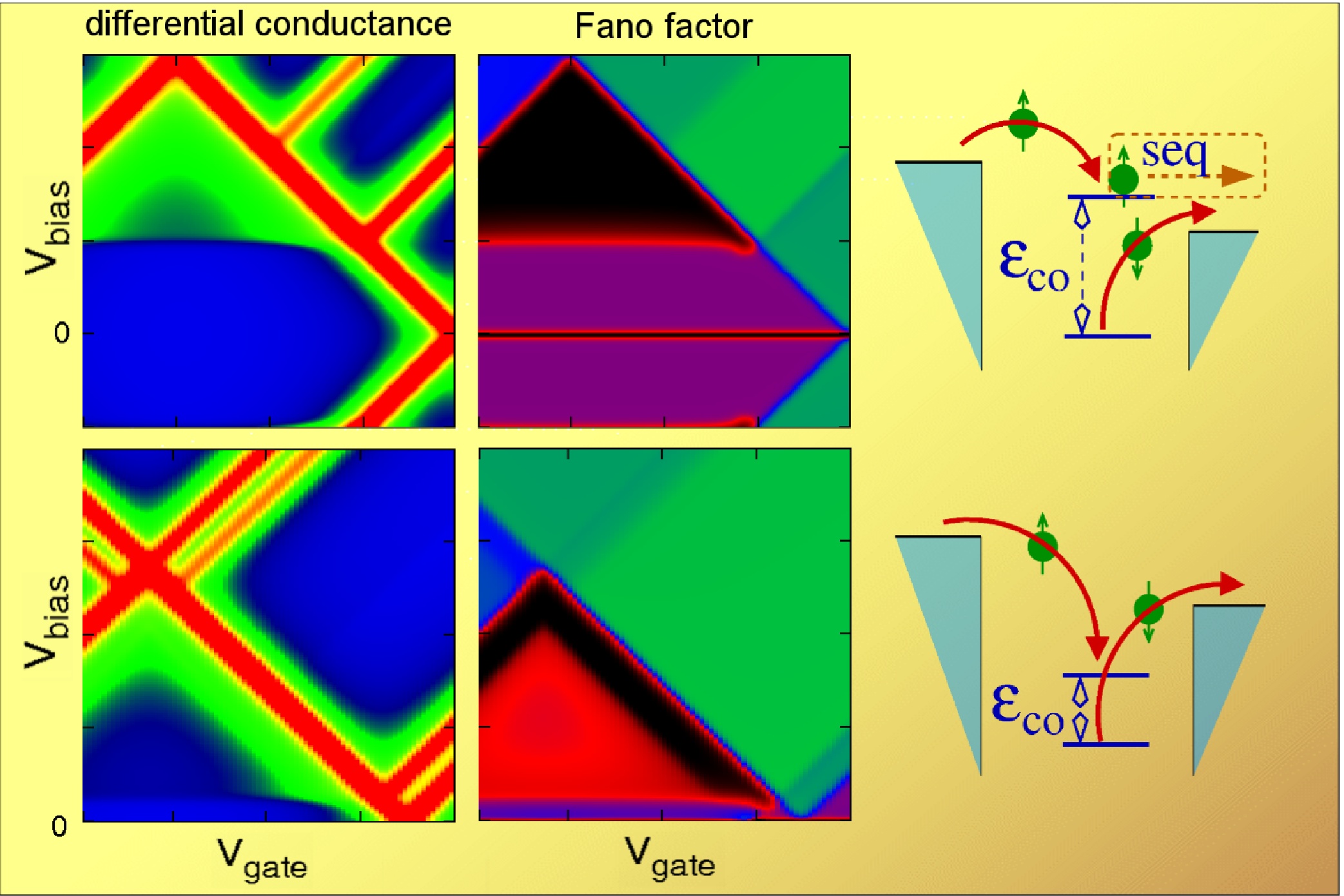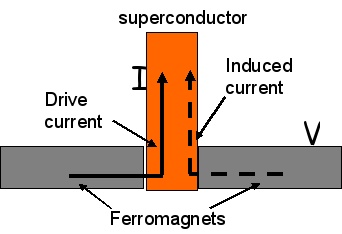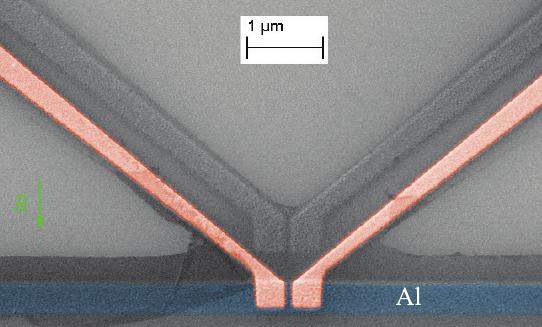Electron Transport through Quantum Dots and Hybrid Nanostructures
In nanoscale quantum dots electronic interactions play a dominant role, leading, e.g. to the Coulomb blockade. We describe electron transport and current noise using various methods like diagrammatic perturbation theory, full counting statistics, or path integral techniques. Often inelastic transport processes and dissipation of energy to the environment play an important role. Similar questions are relevant for charge transport through molecules.
Recently we focus on the interactions of electronic degrees of freedom with resonator modes, which can lead to lasing. Similar questions are relevant for charge transport through molecules.

Transport through hybrid structures
In hybrid structures, materials of strongly differing (or even complementary) properties are brought together. An example is the combination of superconducting and normal or ferromagnetic metals. Transport through such structures show phenomena that are so far poorly understood, e.g. non-local Andreev reflections, that we describe by Green function methods. Hybrid structures are particularly interesting for applications, as their integration with established (semiconductor) technologies is feasible.


